Our Patrons
St. Augustine of Hippo
(354-430)
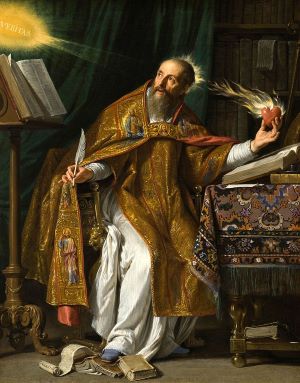
“All good and true Christians should understand that truth,
wherever they may find it, belongs to the Lord.”
St. Thomas Aquinas
(1255-1274)
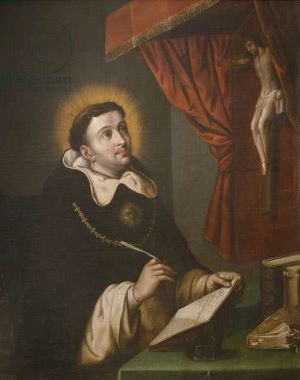
St. Thomas Aquinas is best known for his tremendous contributions to theology, particularly his master work the Summa Theologica. He was a teacher who clearly and compellingly shared with others the lights he had himself received, both through his writings and in his classroom teaching. He was a man of singular focus, whose assiduous study, prolific writing, and teaching were motivated by the love of God and sustained by prayer and the sacraments. When faced by a particular challenge in his writing or teaching, he was known to literally lean his head against the tabernacle, begging the Lord to enlighten him. As a special patron of ITCE and of The Catholic University of America, he reminds us that education is a lifelong process that begins and ends with God. He is a witness of a life wholly given to the relentless and fearless pursuit of the Truth. And he reminds that every challenge and every difficulty are best met by humble reliance on God, who gives light and grace to those who seek Him.
“Just as it is better to illuminate than merely to shine,
so it is better to contemplate and to give to others
the fruits of one’s contemplation.”
St. Catherine of Siena
(1347-1380)
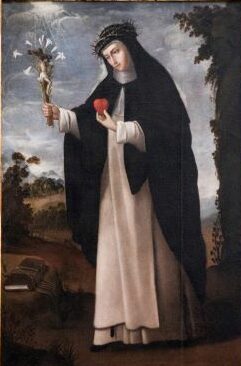
A Dominican tertiary and mystic, St. Catherine of Siena’s brief life of 33 years was marked by intense prayer and intense action in service of Christ and His Church. She desired a life of contemplation, but was called by God to a life of extraordinary activity that placed her in the heart of the political and ecclesiastical controversies of her time. Catherine never engaged in formal study, but was taught by the Lord Himself and is honored today as a Doctor of the Church. During a time of prayer, she experienced an exchange of hearts, in which Jesus gave her His own Heart, burning with love. Catherine is a model for ITCE in her passion and zeal for the salvation of souls and her unfailing devotion to the Church. She reminds us that we each have an irreplaceable role in salvation history. By his power at work within us, God “is able to accomplish far more than all we ask or imagine” (Ephesians 3:20).
“If you are what you should be,
you will set the whole world on fire!”
St. Elizabeth Ann Seton
(1774-1821)
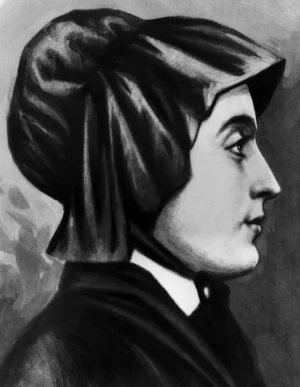
“If you are to do His work,
the strength will be given you.”
St. Edith Stein
(1894-1942)

Edith Stein was born to a Jewish family in Germany. By the age of fourteen she was an atheist. A brilliant student and born educator, she pursued a doctorate in philosophy and was a teaching assistant to the phenomenologist Edmund Husserl. Through a series of encounters, Edith witnessed the effects of sincere religious faith. At the age of thirty, she had a decisive experience while staying at the home of Christian friends. After reading the entire autobiography of St. Teresa of Avila in a single night she declared, “This is the Truth.” She was baptized in the Catholic Church, and for the next eleven years taught, gave lectures, and wrote her own philosophical works before entering a Carmelite monastery. In religious life she continued to pursue her academic studies and writing until she and other Jews were deported to Auschwitz in 1942, where she died in a gas chamber. In our own times, too, many young people struggle with belief in God. Edith is a model for us as teachers and catechists of the often mysterious and hidden working of grace, even within those who seem far from God. She exemplifies that both faith and reason are paths to truth and to the knowledge of God.
“All those who seek truth, seek God,
whether this is clear to them or not.”
St. John Paul II
(1920-2005)
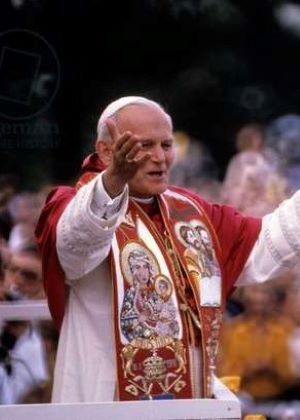
St. John Paul II’s life spanned the dramatic twentieth century with its world wars, totalitarian regimes, and profound cultural shifts. He was a philosopher, professor, poet, actor, priest, and pope. He suffered the childhood loss of his mother, studied in a clandestine seminary, survived assassination attempts, and permitted the world to watch his slow decline and death of Parkinson’s disease. Through these and other experiences God formed him to be a fearless apostle of hope, who challenged the world to “be not afraid” because Jesus Christ, the Redeemer of man, offered the path to fullness of life and freedom. Perceiving the growing darkness of unbelief in the world, he called the Church to a period of new evangelization. He had a particular gift for connecting with young people. He challenged them to reject the illusions and falsehoods that would diminish their freedom and dignity and called them to greatness. He had confidence in their youth and in their real capacity to become saints. He is a model for the ITCE, and we ask his intercession that we too might have unfailing confidence in the God who has loved, redeemed, and united himself with every human being.
“Man is the primary and fundamental way for the Church …
because man has been redeemed by Christ, and because with man Christ is in a way united, even when man is unaware of it.”
Our Logo
“We have come to believe in God’s love: in these words the Christian can express the fundamental decision of his life. Being Christian is not the result of an ethical choice or a lofty idea, but the encounter with an event, a person, which gives life a new horizon and a decisive direction.” (Pope Benedict XVI)
The logo for ITCE consists of four primary elements: a flame, an open book, a cross, and a heart. The flame symbolizes the Holy Spirit, who transforms our hearts and sets them on fire with love. The book calls to mind the Scriptures as well as the great learning and wisdom of the ages, for we come to know Truth through the light of faith and the light of reason. The cross of Christ stands at the center, for the Lord has redeemed us by His death and resurrection. The cross and flame over the heart also evoke the traditional imagery of the Sacred Heart of Jesus, symbol of the burning love of God for each person He has created.
In the biblical tradition, the heart symbolizes the depths of the person, the place where I am most myself. It is the place of decision, of truth, of encounter (Catechism of the Catholic Church, 2563). After encountering Christ, the disciples on the road to Emmaus marveled: “Were not our hearts burning within us while he spoke to us on the way and opened the scriptures to us?” (Luke 24:32). We pray that through our programs and services, Catholic educators and their communities might similarly be renewed and transformed by the love of God, and filled with a renewed sense of vocation and mission.
“If you are what you should be,” St. Catherine of Siena one wrote, “you will set the whole world on fire.” We could say the same for each Catholic school teacher, leader, student, and parent. May the Holy Spirit set our hearts on fire and renew the face of the earth (cf. Psalm 104:30)!

